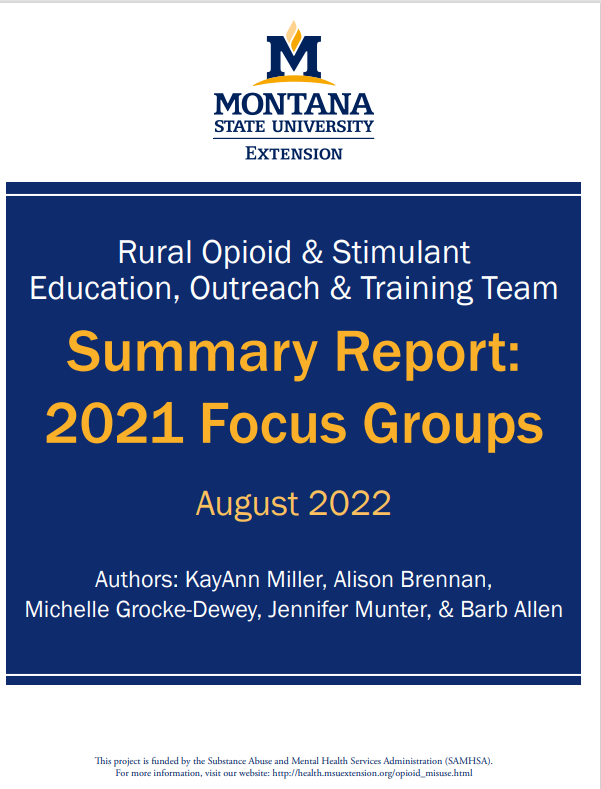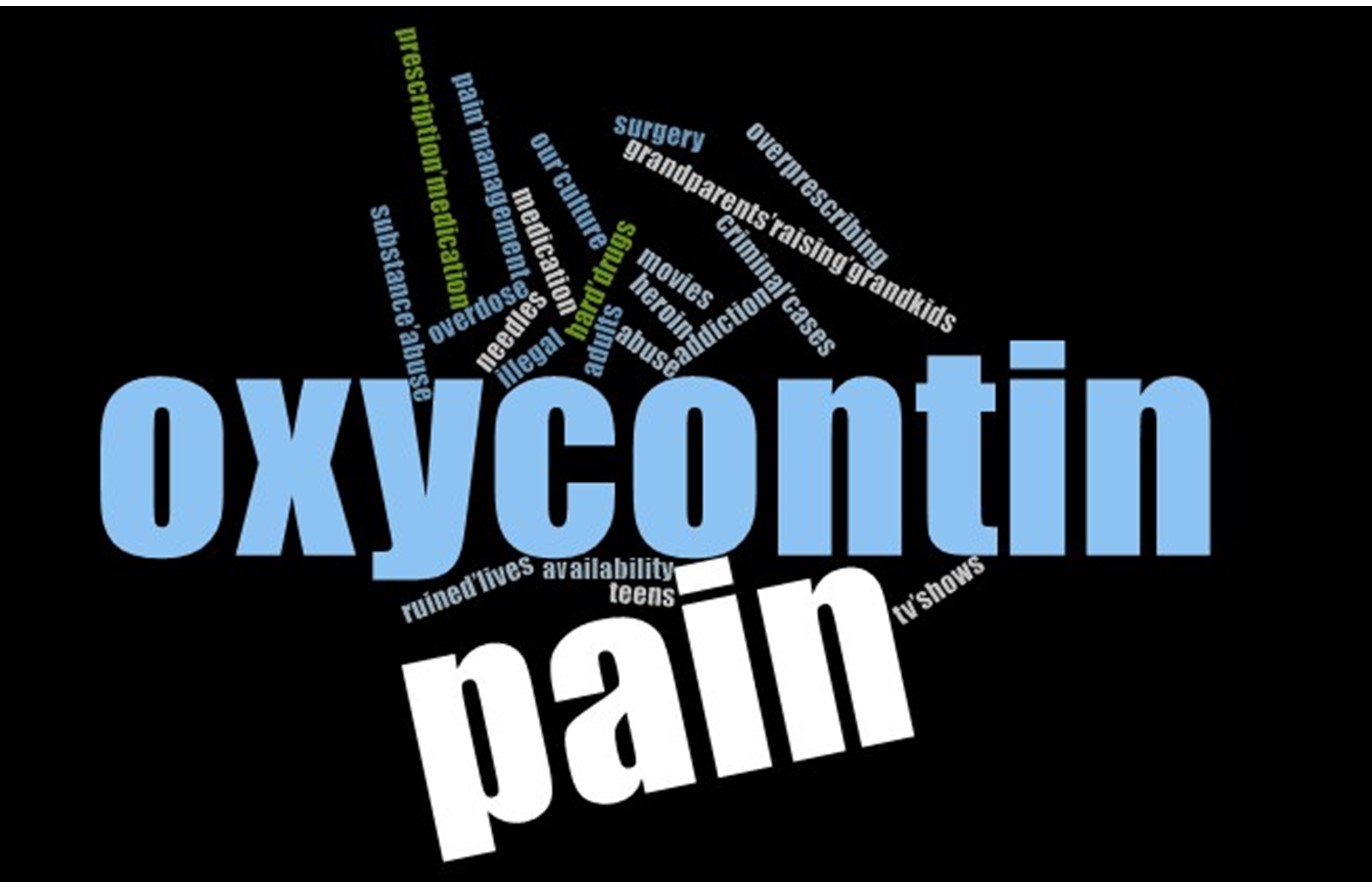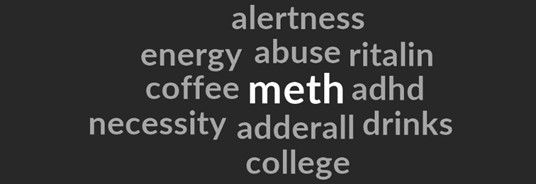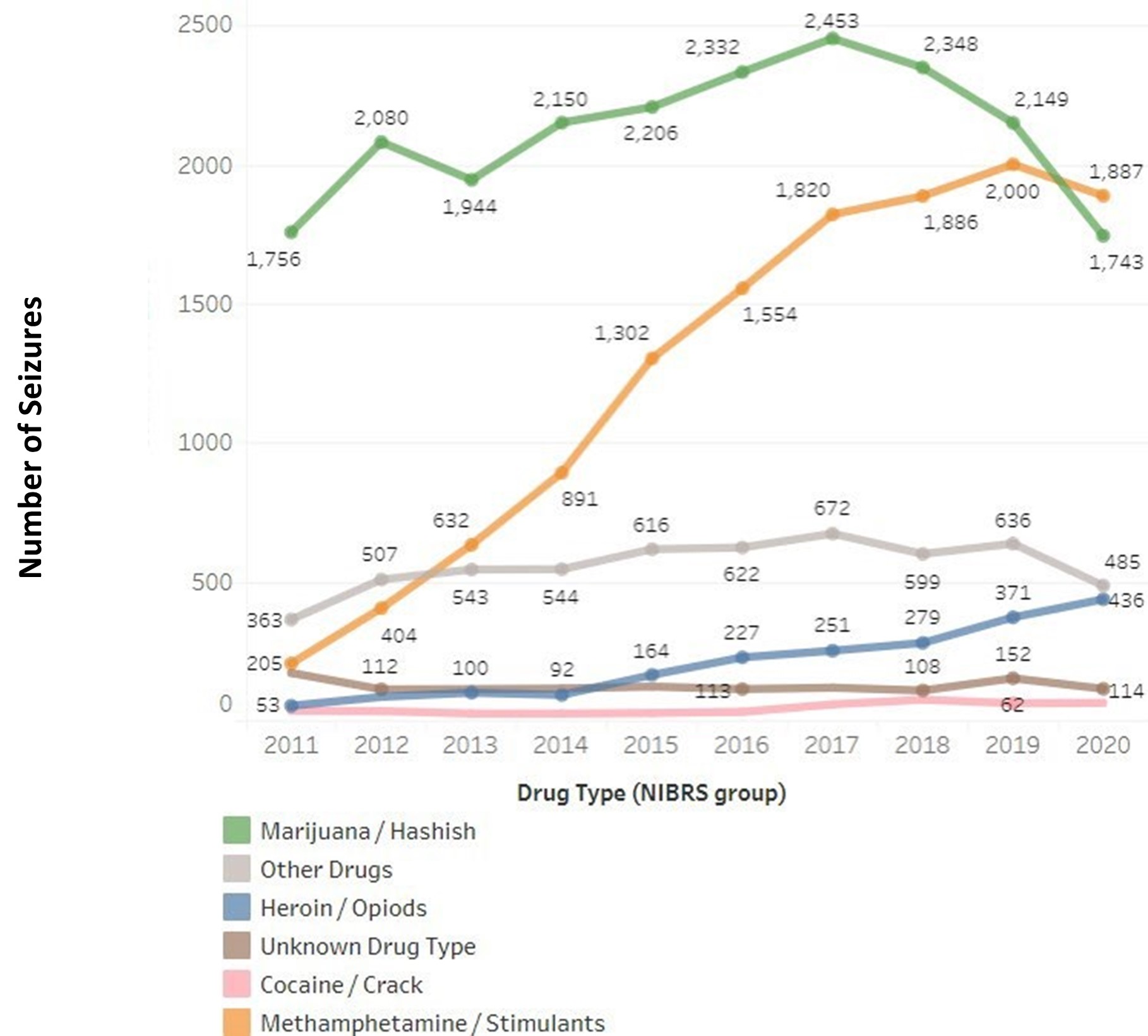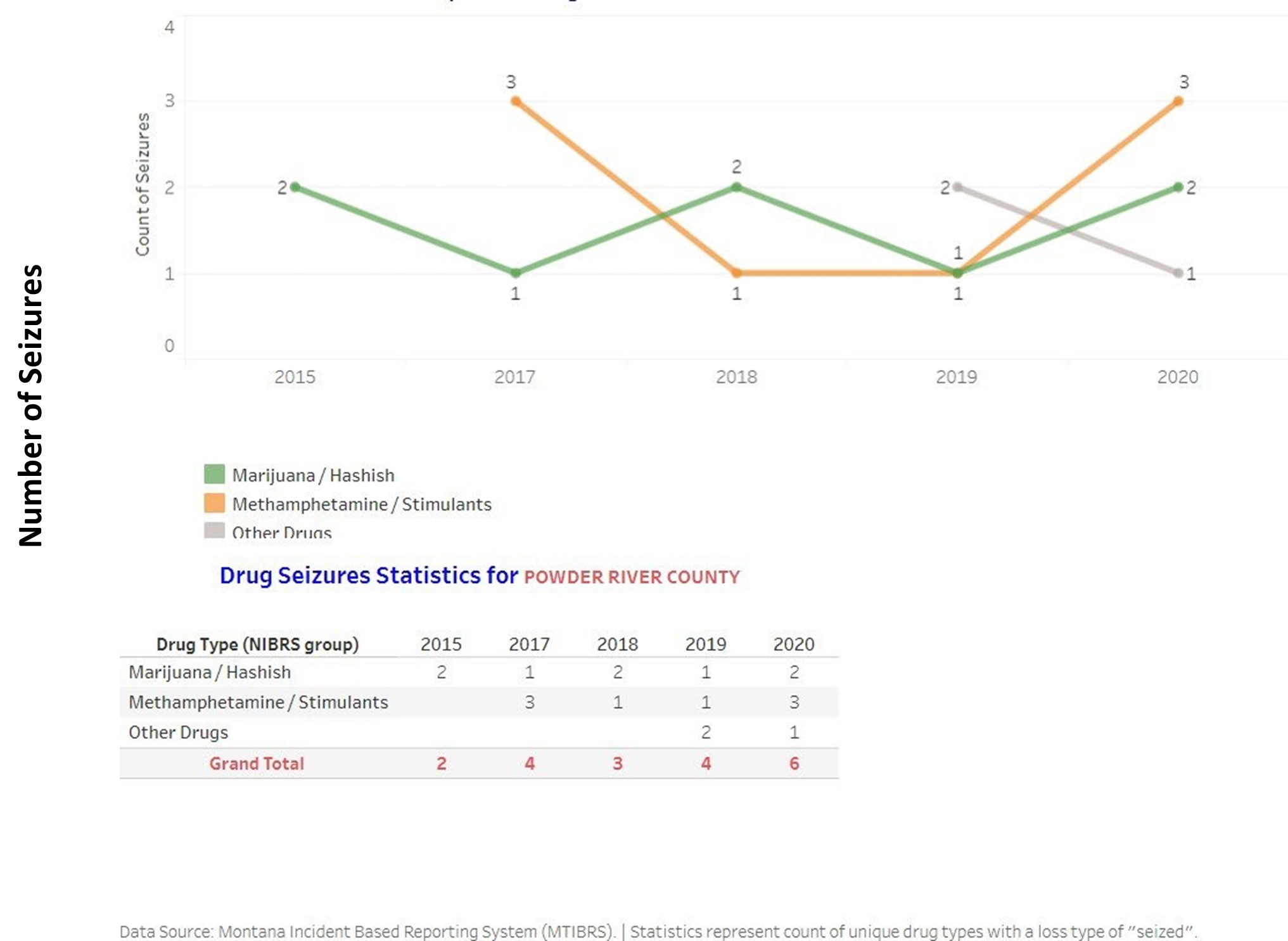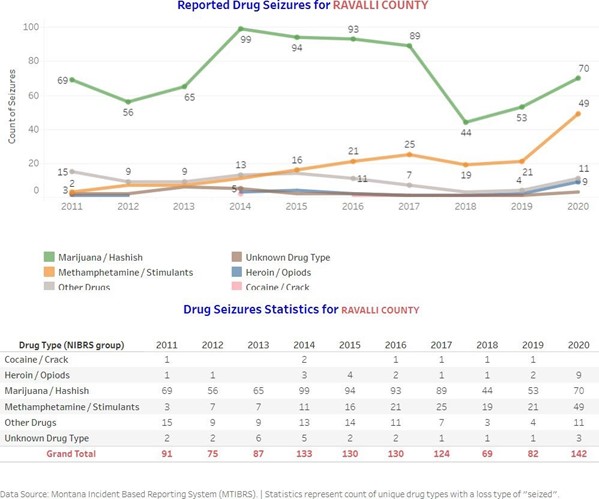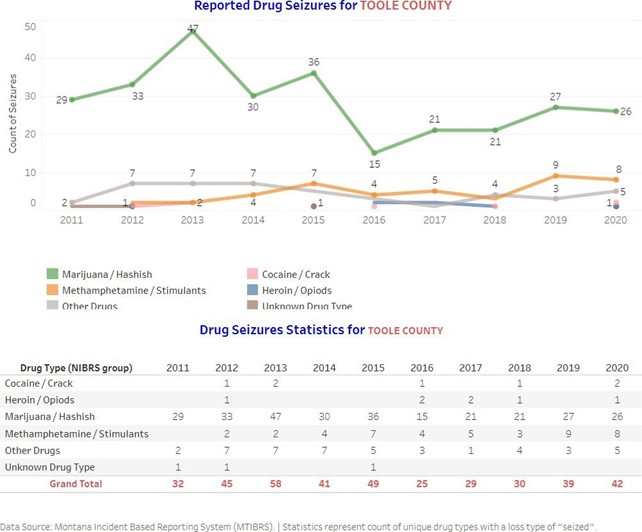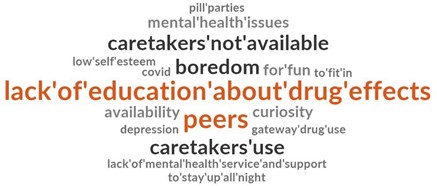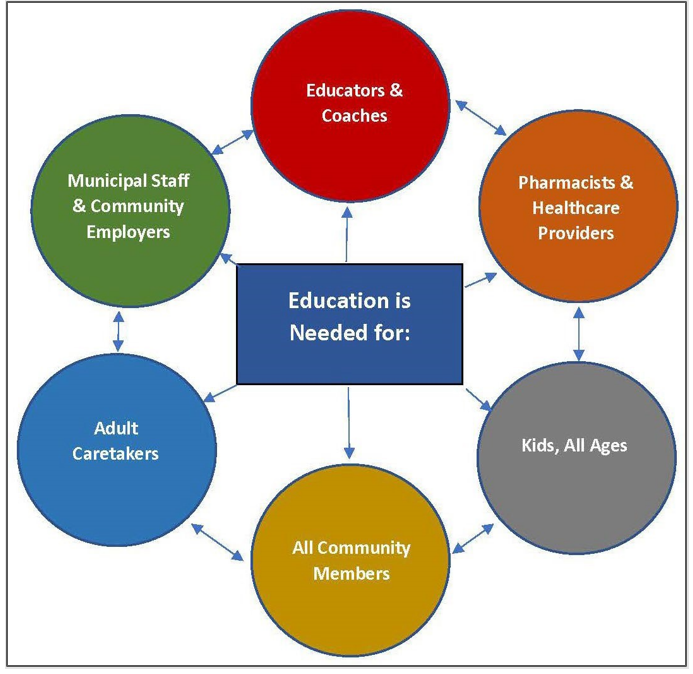Focus Group Summary
|
View, download, and print focus group summary pdf.
Rural Opioid & Stimulant Education, Outreach, & Training Team Summary Report: 2021 Focus Groups August 2022 Authors: KayAnn Miller, Alison Brennan, Michelle Grocke-Dewey, Jennifer Munter, & Barb Allen This project is funded by the Substance Abuse and Mental Health Services Administration (SAMHSA). For more information, visit our website: http://health.msuextension.org/opioid_misuse.html IntroductionMontana State University (MSU) Extension was awarded funding from the federal Substance Abuse and Mental Health Services Administration (SAMHSA) in 2020. Under this grant, the team at MSU Extension aims to work with community stakeholders to prevent misuse of opioids and stimulants among rural and tribal youth. Ultimately, the project team intends to create culturally relevant education and outreach materials for youth and caring adults, as well as responsive technical assistance training for adults involved in prevention work. As part of this project, MSU Extension conducted a series of focus groups within four Montana counties in 2021—Liberty, Powder River, Ravalli, and Toole. These communities were selected for several reasons: 1) they represent a range of rural population classifications; 2) they represent different geographic areas of the state; and 3) Extension agents within these counties were interested in collaborating with, and serving as local liaisons for, the campus-based project team. A total of 32 adult community participants participated across the four focus groups (Liberty, 6 participants; Powder River, 10 participants; Ravalli, 6 participants; Toole, 10 participants). Focus groups were comprised of school superintendents and principles, educators, county Extension agents, law enforcement personnel, school health and mental health professionals specialized in caring for youth, community health workers, and other adults who interact directly with youth (e.g., youth pastors). Focus group questions were designed to help MSU Extension researchers understand challenges related to opioid and stimulant misuse experienced by young people and others in Montana’s rural schools and communities. Focus group participants discussed their impressions and perceptions of opioid and stimulant misuse in their counties. They also provided ideas for addressing substance misuse among young people throughout rural Montana. Responses and input from these individuals helped illuminate perceived causes of substance misuse in Montana, along with potential sources of prevention. The responses also gave researchers additional information to be used in the creation of education, outreach, and prevention tools for use in rural Montana communities engaged in preventing substance misuse. Summary of Key FindingsFocus group participants provided researchers with a plethora of information, summarized in this report. It should be acknowledged that some focus group participants expressed concern that distributing information about opioids and stimulants to youth might spur curiosity and encourage use. However, many other participants expressed that more education for community participants is needed in Montana. In particular, focus group participants expressed the following:
Participants' Thoughts About Opioids and StimulantsResearchers asked participants in each group to share the thoughts that came to mind when they heard the words “opioids” and “stimulants.” These words are presented in this report in the form of a word cloud, which weights each word based on the number of times it was mentioned within this exercise. Quotes from focus group participants also are included. Reviewing the word clouds and quotes can help readers understand participants’ mindsets when they shared thoughts and ideas about opioid and stimulant misuse among young people and others in their rural Montana communities. Thoughts brought to my mind when I hear the word "Opioids"
Thoughts brought to my mind when I hear the word "Stimulants"
Opioid and Stimulant Trends in Montana and in Focus Group CountiesData in the charts that follow are from the Montana Board of Crime Control (MBCC) and are based on drug seizures throughout Montana and within the four counties included in this focus group report. In 2020, marijuana was the most abused non-alcoholic drug in Montana, which relates to concerns among focus group participants about gateway drugs. As the data illustrate, despite the Meth Project campaign, which began in 2005 (https://montanameth.org/about-us/#mission), Montana still has a methamphetamine (meth) problem. Meth, Adderall and Ritalin were the three stimulants mentioned when focus group participants were asked, “What comes to mind when you hear the word, ‘Stimulants?’” The data below also depict increasing numbers of heroin and other opioid seizures in Montana, although some of the focus group participants mentioned not having witnessed this trend in their county at this time. Drug Seizures in the State of Montana, by Year & Type
https://dataportal.mt.gov/t/MBCC/views/CIM-DrugSeizures/DrugTrendsDashboard?iframeSizedToWindow=true&%3Aembed=y&%3AshowAppBanner=false&%3Adisplay_count=n&%3AshowVizHome=n&%3Aorigin=viz_share_link, downloaded Dec. 2, 2021. Drug Seizures in Focus Group Counties:Liberty CountyLiberty County, one of the four counties represented in the focus groups, has not reported a drug seizure of any kind since 2016, according to MBCC. (The organization does share whether its information is due to non-reporting, or the non-existence of seizures.) Powder River County, by Year & TypeDrug Seizures, 2015-2020
https://dataportal.mt.gov/t/MBCC/views/CIM-DrugSeizures/DrugTrends_County?iframeSizedToWindow=true&%3Aembed=y&%3AshowAppBanner=false&%3Adisplay_count=n&%3AshowVizHome=n&%3Aorigin=viz_share_link, Downloaded December 3, 2021 Ravalli County, by Year & Type
Workbook: CIM - Drug Seizures (mt.gov) Downloaded December 3, 2021 Toole County, by Year & Type
Workbook: CIM - Drug Seizures (mt.gov) Downloaded December 3, 2021 Focus Group Perspectives on Why Rural Montana Youth Try DrugsFocus group participants spoke the words that appear in the word cloud below specifically in regard to rural Montana youth, and their thoughts mirror national findings. According to the National Institute of Drug Abuse (NIDA, 2008) teens and adolescents use drugs to feel good or feel better, to do better, out of curiosity or boredom and to have fun and fit in with others who are using drugs. Unfortunately, according to NIDA, many teenagers and their caretakers do not always understand the effects of using drugs to feel better or do better, and NIDA lists more education as the primary solution to reducing prescription substance misuse among teens and adolescents. “If the kids knew more about what the drug could do, or what it could cause, it might prevent them from wanting to use it.” --Montana Focus Group Participant Gateway Drug UseThe “gateway hypothesis” suggests that certain drugs (e.g., alcohol, marijuana) act as a gateway—preceding and increasing risk—for later use of “harder” or illicit substances. The gateway concept is, however, an oversimplification and misappropriation of epidemiological research on adolescent substance use trends observed in previous decades (Miller & Hurd, 2017). Existing research does not provide sufficient support for the gateway hypothesis, nor does it completely discredit it (Miller & Hurd, 2017). Focus group participants also discussed the issue of gateway drug use. In particular, gateway drugs were mentioned frequently by focus group participants who work in law enforcement. According to these participants, the most prevalent gateway drugs in their communities today include alcohol, tobacco, and marijuana. "The biggest thing I see in my line of work, working with youth, is alcohol and tobacco. There are a lot of Minor-In-Possessions for that. I currently don't see drug use, if any, other than that." --Montana Focus Group Participant "I can only speak from my personal experiences. We have about 10 deputies who are out on the streets, and I'm just one of them, and I don't know everything. From my personal experience, it's not necessarily the stimulants or the opioids that are a problem with the kids. Of course, vaping's there, and of course even though marijuana is becoming legal for adults, it's still illegal for children. It is a problem that I have seen an increase on, and I know it's hitting our community harder than it has in the past. But other than alcohol, tobacco, vaping products, and marijuana, I can't necessarily say opioids and stimulants are really present issues that we're dealing with in comparison to marijuana and alcohol." --Montana Focus Group Participant However, some Montana communities have different experiences, as indicated by the quote below. “When I hear the word opioid, I think Monday through Friday nine to five. We come to work every single day trying to tackle the issues that opioids represent. Opioids are the root cause of the ruining of a lot of lives.” --Montana Focus Group Participant Importantly, focus group participants indicated that “not at present in our community” does not mean all is well. Focus group participants say this is not the time to breathe a sigh of relief and stand down. Rather, it means there still is a brief window of time to provide rural youth and community participants with the education they need before it is too late. "I agree with others’ statements about marijuana and alcohol. Those are my biggest risk factors right now. But kids that use marijuana, use alcohol, and they have a tendency to gravitate toward opioids at one time or another. So, we're looking at substances that can possibly lead to opioid problems, and that's what I'm concerned about." --Montana Focus Group Participant “I can speak from personal experience as far as the whole gateway thing. One thing definitely leads to another. Also, opioid use goes hand-in-hand with depression and with cutting or other cries for help on the suicide-end of the spectrum.” --Montana Focus Group Participant Substance use progression and development of substance use disorders both involve a complex interplay of individual, family, and broader social and environmental factors and cannot be reduced to merely the properties of a substance. For example, opioid use disorder is more likely among individuals with particular genetic profiles because these genes are reliably linked to the concentration of dopamine receptors, opioid receptors, and regulatory proteins in the brain (Mistry et al., 2014). Additionally, co-occurring mental disorders are more common among individuals who misuse opioids or have been diagnosed with opioid use disorder (Meyer et al., 2014; Vaughn et al., 2012). Where does the gateway concept leave us, then, when it comes to understanding how use of other substances might impact adolescents’ risk for opioid misuse? We cannot draw a clear or conclusive causal pathway. However, in considering the connection between prescription opioid misuse and later heroin use, the following research finding is noteworthy: while only approximately 4% of people who misuse prescription opioids transition to heroin use, the risk of initiation of heroin use is 19 times greater among individuals who have misused prescription opioids compared to those who have not (NIDA, 2018). Detailed Focus Group FindingsFindings No. 1 Children of all ages, as well as adults, need to know more about opioids and stimulants and the effects of such products on our minds, bodies, and lives for purposes of deterrence and to satisfy curiosity without use.
“I don’t know if our kids really know what opioids do, or how opioids affect their bodies.” --Montana Focus Group Participant Focus group participants reported a nearly universal desire for more education about substance misuse, prevention, and recovery, and they identified six categories of community participants who also might want, or benefit from, more information as illustrated below:
Focus group discussions mentioned a wide variety of people who would potentially benefit from more education about substance misuse. During the discussions, talk about how one group in a community could help rural Montana children stay safe led to the mention of another group, followed by another group. By the time the participants were through, it was clear that we all have a role to play in helping prevent substance use by young people in Montana, and we all need to learn more and engage in this important work. “As teachers, lack of education about opioids and stimulants is one of our biggest challenges. You all are talking about all of these things, and I have no idea about certain ones.” --Montana Focus Group Participant “We need to include coaches in getting information out. They’re often seeing some of the changes in kids before parents are, or sometimes seeing the changes a little bit differently. Coaches are in a good position to talk to kids about sports injuries, preventing injuries, and how to come back safely from injuries (without opioids).” --Montana Focus Group Participant “We need to ask, ‘What do we need to do to educate everyone to help make this community a better place?’ Because this is our responsibility.” --Montana Focus Group Participant “We all need information about signs of misuse and information about resources locally that individuals can turn to.” --Montana Focus Group Participant “I think we have to be really careful that we educate adults and teachers and coaches and not necessarily plant ideas in our students’ heads right now, where [opioid and stimulant misuse] is not already a problem or not yet a problem.” --Montana Focus Group Participant “Being in the education community, I think it’s the educational piece that we need to push, as well as the involvement. In our community, it’s very hard to get [people] involved in education, to put forth the effort, and have it sustained. So, my point of view is that it’s the educational piece we need to address, not only with our youth, but with our community. Because if we educate our youth, but not our [community] members, we don’t have a solid foundation for prevention.” --Montana Focus Group Participant “If a kid has some access to a caring adult, it’s not always going to be their parent, and kids are not always going to feel comfortable going to their parents. That’s where teachers, and coaches, and parents of kids’ friends and community members come in.” --Montana Focus Group Participant Finding No. 2 Information about proper disposal of medications needs to reach a wider audience, including children. Participants in the focus groups pointed out that they believe their students and community members need more information about how to dispose of medications properly, including how and when to dispose of medications, where to get disposal bags, and why proper disposal is important. Of even greater concern to participants is the current lack of involvement in opioid-misuse prevention by pharmacists and providers in their communities. “If access to opioids were limited [as a result of proper disposal], it would be harder for people to misuse them.” --Montana Focus Group Participant “If every prescription from the pharmacy had a Deterra bag in it and a note that said, ‘When you’re finished, put whatever you don’t use in this bag, and this is where you take it,’ it would help.” --Montana Focus Group Participant “A benefit [of providing bags] is that now they’re in the home, and it’s with your family, and kids see a parent disposing of their prescription drugs in a proper way. I think that’s where that education of the next generation happens.” --Montana Focus Group Participant “From a coroner’s viewpoint, community members don’t know we have drop boxes. We go to a house of a deceased elderly person, and who knows what they have there. They could have Percocet. They could have Fentanyl. They could have Vicodin. We collect it and put it in the drop box. I would like to see more of those boxes and more literature to say we have the boxes. I know some people are a little timid bringing medications to the Sheriff’s office.” --Montana Focus Group Participant “We took the drop box we had at the Sheriff’s office out, because the community was not comfortable having to come into the station to dispose of their Deterra bags.” --Montana Focus Group Participant “We have a lot of kids who are prescribed medications, and our school is really involved in that process. We could make [proper disposal] second nature for kids with statements like, ‘Okay, you’re not taking this medication anymore. Let’s dispose of it how we’re supposed to and follow the protocols.’ We could also make sure parents are involved. We can make it something we just do for every kid who has medication and every kid who needs to dispose of medication.” --Montana Focus Group Participant “To prevent flushing and other improper disposal, we should include info in water bills—a little leaflet talking about clean-up, proper disposal, and drop-box locations.” --Montana Focus Group Participant “I think one thing that has been really popular is the Drug Take Back events and all of the education as far as the packets to dispose of medication. I think that education right now might be pretty challenging, because people are sick of virtual education. The Drug Take Back events, or picking up bags at pharmacies, are things people can do right now.” --Montana Focus Group Participant “We need take-back events at high school games. We’re reaching several audiences and communities then.” --Montana Focus Group Participant Finding No. 3 Finding a solution to opioid and stimulant misuse by Montana children requires collaborating with, and providing accurate knowledge to, children. “We need to figure out how we can get the kids involved to provide us with some education and to offer feedback and solutions. Kids have the boots-on- the-ground truth. What is it that we can do as adults to get some information from the kids? Because we can do all of the clichéd things in the world, but it’s really the kids who might have a solution.” --Montana Focus Group Participant Focus group participants identified a need to be able to provide children in their communities with adequate information about local resources, including lists that students can access immediately from their phones. “Do our kids know where to go for help or who to talk to? Do they know how to reach them? Can they text for help? What about in a substance-related emergency? I’m not sure I could pull all that together quickly.” --Montana Focus Group Participant “Education has to be more than just, ‘Open your book. This is what it is. This is what it does. Blah, blah, blah. It has to be something that is really engaging to them. It has to be real life to them. I brought in a respiratory therapist last year to talk about vaping. Vaping [problems] were real to them when she was done.” --Montana Focus Group Participant “Their phones are where they’re connected for all of their information.” --Montana Focus Group Participant Focus group participants recommended that youth education be delivered through interactions with former students who have lived experience. “We had a young kid from the prison come down a couple of years ago. That was extremely impactful. He was only in his early 20s and in prison for life. That really hit home with our kids.” --Montana Focus Group Participant “In-person education is important for our kids. I know as a parent, I don’t always read [and do] everything the teachers want me to.” --Montana Focus Group Participant “Our students here at the elementary say they love having people from the community come in, or even older kids.” --Montana Focus Group Participant “I do think, if we had a program, a fair share of students would trust the provider or whoever’s teaching them, if it’s someone they can relate to.” --Montana Focus Group Participant During the focus groups, participants noted that activities also are something that children in their communities need. “We need activities. I’m not talking about activities for kids who are athletes. I don’t want to do anything to jeopardize athletics. But what does that mean for the kid who doesn’t have those athletic activities? What are we going to do for them?" --Montana Focus Group Participant “We have to make activities more accessible and available for kids and parents. If there’s a skate park in your community, for example, make sure it’s in good shape and ready to use. We have to make sure activities accommodate all levels, like a beginner’s level, medium level, high level. We need to get involved [with community spaces] so parents CAN do things with their kids.” --Montana Focus Group Participant “We need activities for our kids, so they don’t turn to drugs as a ‘fun’ outlet.” --Montana Focus Group Participant “There are two things that rank up there with why kids do drugs: Curiosity and boredom.” --Montana Focus Group Participant Finding No. 4 Montana schools and communities need more resources in order to provide adequate mental health support to children and community members. Focus group participants pointed out that, in each of their communities, there are not enough mental health resources to support children, care providers, family members or community members. They believe more needs to be done in their communities to create, and provide access to, these resources. “Depression and depressive symptoms are reasons for drug use.” --Montana Focus Group Participant “It comes back to a need for mental health resources. Because we have a lot of people and adults in our community who need assistance, and other activities besides training, to avoid substance misuse.” --Montana Focus Group Participant “One thing that I’ve seen in our community is that not only do we have parents who have addictions, but we have students right here in our school, and in other schools I’ve worked in, who are getting their drugs right from their parents— whether the kids are stealing the drugs, or their parents know.” --Montana Focus Group Participant Finding No. 5 Children and others need training on how to be good peers and role models. Focus group participants noted that Montana children need good, solid, factual, health-based information and training about how to be a good peer. "People listen to their peers, but unfortunately, their peers do not have adequate information for them, so maybe we need to educate some of their peers." --Montana Focus Group Participant “We hear a lot, ‘My buddy or my friend told me.’ So, they definitely take their friends information over a lot of other information—whether it’s right or wrong.” --Montana Focus Group Participant When rural Montana teens talk about peers and education, they appear to be reluctant to implicate themselves in an activity but seem more willing to point to their friends. In an ongoing study—another aspect of this MSU Extension substance misuse project—data revealed that among students in rural Montana schools, less than one percent of students admit to using drugs themselves, but approximately 14 percent of the students surveyed to date said their friends use drugs. However, when focus group participants talked about peers and education, they were not referring just to children. Noted one focus group participant: “I love the idea of peer support for parents. When my kids were growing up, I had a lot of parents surrounding me who were like-minded, and we helped each other. So, I believe having that for other parents and having them be able to feel supported is important.” Focus group participants were excited to talk about peers, because when it comes down to it, peers are role models. And role models can pressure or induce us to do the wrong thing, or they can help us learn to be better. Participants noted that not everyone understands how to be a good role model and suggested training for students, caretakers, families and other community members. This kind of training has worked among adolescents and teens in the past. In their study, Natural Peer Leaders as Substance Use Prevention Agents: The Teens’ Life Choice Project, Golonka et al. (2017) noted that while some of the most influential peer leaders may also be the adolescents and teens using drugs in some settings, these leaders have demonstrated effective substance use prevention leadership with help, training and support. Here, the benefit is two-fold in that both the peer leader and followers can gain access to the help they need. Natural peer leaders who are not using drugs also can be effective, even when engaging with peers outside their own cliques.Focus group participants also shared their own experiences with peer training and its effectiveness. “I would suggest peer counseling [to help address substance use]. You have a teacher, guidance counselor, principal, whomever, as a referee in the room with small groups—five to 10 kids at most—and mixed grades such as 9th-12th or 7th and 8th together. We did that in high school. We were paired randomly, and we were with one teacher once a week, and honestly, it made a huge impact. We got to know some of the kids we normally wouldn’t have, and we just got to talk. It was confidential, and I got a lot out of it as a kid.” --Montana Focus Group Participant Conclusion Are there adults, educated about substance misuse, whom students can turn to? Are there community members with lived experience in the environment who are willing to share with students in constructive ways? Are community healthcare providers and pharmacists working with the community to educate people about proper prescription medication disposal? Are coaches doing their best to ensure children do not play while injured, or with the help of opioids or other substances? Another key finding was that social media can be a powerful tool when used in positive ways for substance use prevention, as well as for support during and after recovery. As an example, all focus groups included participants who suggested substance misuse prevention and/or recovery support groups on TikTok. As it turns out, these communities already exist for teenagers and others on TikTok and on other social media platforms, and students can be taught to use them in helpful ways. Teaching ourselves and others about opioid, stimulant, and other substance misuse is a collective responsibility, focus group participants noted. For if we do not do it, who will? “Just keeping kids healthy, mentally, physically, in all ways, and helping them keep their relationships healthy. That’s our job. Kids need to feel accepted, like they can talk to somebody. They need to feel they have a purpose. All of these items are required for the prevention of any negative thing.” --Montana Focus Group Participant
|
|
|

